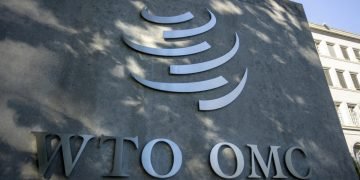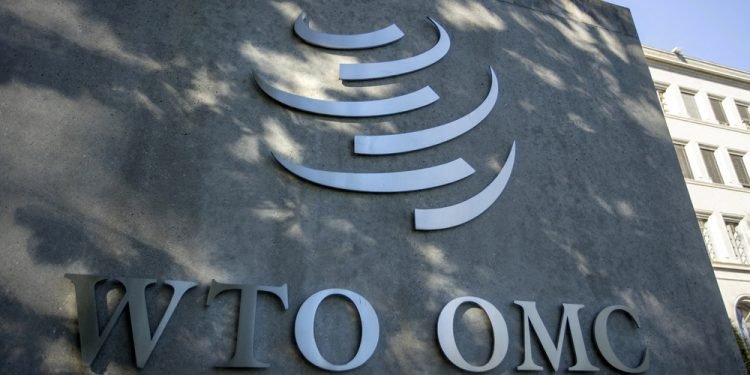By Eva Richardson | The Logistic News
April 17, 2025
The World Trade Organization (WTO) has drastically revised its global trade outlook, warning that tariff escalations, led by the United States and mirrored by key trading partners, are pushing global merchandise trade into contraction territory.
On Wednesday, the WTO announced it was cutting its 2025 global trade growth forecast from +2.7% to -0.2%, signaling what could be the steepest decline in cross-border trade since the height of the COVID-19 pandemic in 2020.
“The numbers reflect growing fragmentation and mistrust in the international trading system,” said WTO Director-General Ngozi Okonjo-Iweala, citing not only tariff walls but also a rising wave of export controls and strategic stockpiling.
A Dangerous Shift in Trade Sentiment
At the core of the WTO’s revised forecast is the intensifying tariff war between the United States and China, which has spilled over into broader trade corridors. New U.S. tariffs—reaching up to 145% on Chinese goods—have triggered retaliatory measures and uncertainty across Asia, Europe, and Latin America.
Economists warn that these trade tensions are no longer isolated political moves but now systemic risks for global logistics networks, manufacturing cycles, and emerging market development.
“The post-COVID rebound has officially stalled,” said Anne Yamaguchi, chief trade economist at Pacific Sphere Analytics. “Protectionism is returning with a vengeance.”
Logistics Industry Braces for Disruption
The impact is already visible in freight volumes, port throughput, and supply chain forecasts. According to recent data from major ocean carriers, container volumes are down 9% year-over-year, particularly on transpacific and Europe–Asia routes.
Freight forwarders are facing delays, rerouting costs, and clients seeking regional alternatives to global sourcing—while contract rates for long-haul shipments have become increasingly volatile.
“The WTO forecast confirms what we’ve already been seeing on the ground: unpredictability and a slowdown in trade flows,” said Mélissa Hartmann, Head of Global Strategy at EuroBridge Logistics.
Echoes of 2020—but With a Political Twist
Unlike the COVID-related trade collapse, this slowdown is politically driven, with economic uncertainty amplified by nationalistic trade agendas. With elections looming in several major economies and ongoing tensions between the U.S., China, Russia, and the EU, the WTO warns that further deterioration is likely unless new agreements or stabilizing dialogues are reached.
The WTO has called for renewed multilateral negotiations, but confidence remains low amid fractured trust in existing institutions.
Conclusion
The WTO’s dramatic downgrade in global trade projections sends a sobering message: the world is veering away from interdependence toward fragmentation. For the logistics industry, resilience, visibility, and regional adaptability will be critical—not only to survive the storm but to redefine strategy in an era of uncertainty.
Eva Richardson is a senior correspondent at The Logistic News, reporting on global trade, supply chain governance, and institutional policy shifts across the logistics ecosystem.























